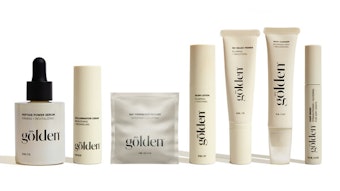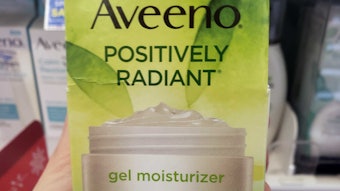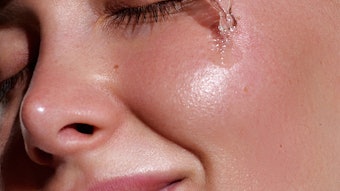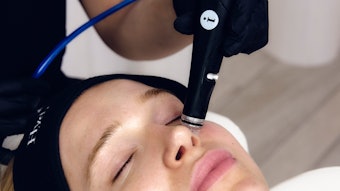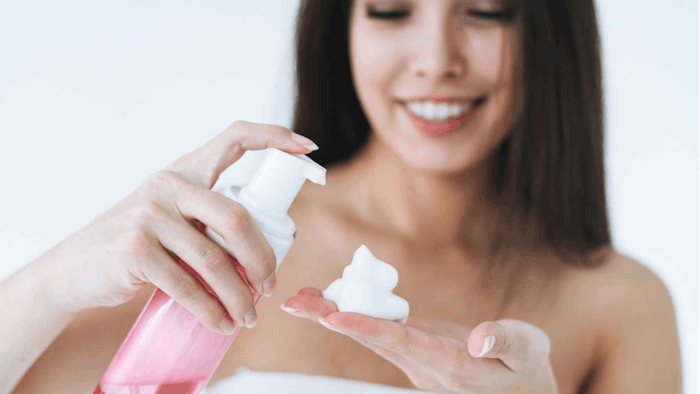
Log in to view the full article
Read this article and more in the September 2023 digital magazine.
A recent TikTok trend featured “frothing” beauty products. One influencer used a barista-style coffee frother to transform a cleanser; another did this with a color foundation.1 While this practice is not necessarily recommended – since it could destabilize active ingredients or increase the risk of bacterial contamination (due to the addition of water) – this frothy, foamy texture is regaining consumer interest.1
According to Technavio, growth in the foam-based beauty and personal care market is expected to expand at a CAGR of 7.3% from 2021 to 2026 to reach US $2.04 billion. Innovation in this space and portfolio extensions leading to product premiumization are notably driving this sector.2
Properly formulated foam products and foamed emulsions in the cosmetics and pharmaceutical industries have a broad range of applications. Foamed emulsions are an important constituent in products such whipped and foam creams.3 This is not only thanks to their improved delivery and penetration capacity for active components,4, 5 but also because of their ability to control application and skin absorption, and to maintain beneficial properties in different skin products.6
In terms of actives delivery, the use of foams in dermatology was first reported in 1977 in a study of the advantages of a quick-break aerosol foam containing betamethasone benzoate in comparison with its semi-solid dosage form.7 Here, the authors found that the activities of the ingredient concentrate, collapsed foam and an ointment and gel were all similar – and significantly better than the activity of the cream.7
Since then, the study of foams as a vehicle for active compounds has shown great potential,8 making them suitable for sectors including cosmetics and personal care.6 More recently, emulsion-based foamed products such as creams and lotions were shown to reduce water loss from the skin, improving moisturizing properties.6
In terms of application, since foamed products are easier to spread and absorb and penetrate quickly, they also tend to avoid the greasy, sticky or oily feeling that creams can leave on the skin after application.9 These characteristics are undesired in topical pharmaceutical and personal cleansing products. Indeed, today there is increased demand for foaming cleansers in lotion, cream and gel forms since they are more pleasing to use and give consumers a refreshing sensation.10
Foamed products from nano emulsions are being explored for their ability to increase bioavailability."
Both o/w and w/o emulsions are used to formulate foamed products. The oil phase typically consists of mineral oils, triglycerides, fatty acid esters, omega-3 and -6 or essential oils, depending on the application. Water-free emollient foams are also being developed to support the incorporation of water-insoluble active compounds into formulas. In addition, foamed products from nano emulsions are being explored for their ability to increase bioavailability.9
Foamed cosmetics and pharmaceutical products can be found in the form of aerosols, i.e., pressurized formulations in cans, or as formulas in propellant-free, manually pumped bottles.7 A related patent10 describes studies comparing so-called self-foaming and post-foaming creams with reduced surfactant levels. Here, the self-foaming creams containing less than 2% surfactant were capable of foaming, whereas the post-foaming creams with at least 2% surfactant required pressurization with CO2 or N2O to remain stable.11 Consumer interest in natural products has accelerated such research in self-foaming pressurized creams, as these consumers generally prefer products without surfactants.12
In relation to today’s market interest in foam products, the present study describes the formulation of a cream that was foamed (or not, control) using a device equipped with a novel membrane technologya. The creams were compared in terms of spreadability and penetration to assess the effects of foaming on the product.
Materials and Methods
Test creams: A standardized cream and foamed version of it (i.e., hydrophilic ointment containing water or unguentum emulsificans aquosum) were used for the experiments described. Both creams were diluted in a 1:1.5 water-to-cream ratio for comparison purposes, although only one was foamed. Air was used as a gas phase.
The device and membrane technologya used to process the cream enables foaming at room temperature without cooling, in contrast to conventional methods. This approach allows the bubble size to be precisely adjusted, e.g., for sensory and stability characteristics. A final gas fraction of 30% was achieved using the selected settings.
Cream spreadability: A specially developed instrumentb (see Figure 1) was used to measure the spreadability of the creams. For this purpose, 2 mL of cream (foamed and non-foamed) was placed on the carrier and the spatula was spread over the cream at a constant speed of 50 mm/sec. The spreading force was measured across the distance between the cream and the carrier (100 mm). Ten measurements were made per cream.
Cream penetration rate: A specialized measurement method was developed by the same third partyb to assess the penetration rate of the creams. Here, 1 mL of cream was placed on a wound dressing patch that simulates skinc and sealed completely around it. Weight loss by evaporation served as an indicator for the penetration of the cream into the skin.
The samples were placed in a climatic chamber and incubated at 37°C at a relative humidity of 20% for 4 hr. Weight loss was then measured and compared between the foamed and unfoamed cream. Six measurements were made per cream.
Hardness versus spreadability: In previous work relevant to this study, measurements were carried out to assess the relationship between hardness and spreadability properties. In this case, butter and a foamed butter were used for comparison. Texture analyses were carried outd as well as spreadability tests. The latter were conducted using a cone with a cone angle of 30 degrees; here the sample is squeezed between two matching cones and the forces to deform it and then withdraw from it are measured.
For both tests, the samples were initially cooled in a refrigerator overnight at 4°C, then measured at room temperature immediately after removal. The test speed was set to 1 mm/sec for a distance of 5 mm, whereas the trigger force was fixed to 5 g. The maximal force values resulting from the cone tests provided information on the hardness and spreadability of the foamed samples.
The force required to spread the foamed cream was lowered by 10%."
Results and Discussion
Cream spreadability: Results for the spreadability of the creams are shown in Figure 2, averaged across the 10 measurements taken for each. As can be seen, the force required to spread the foamed cream was lowered by 10%. This reduction in force could translate to applications for sensitive or even wounded skin, avoiding or reducing the potential for re-inflaming or re-injuring it.
Cream penetration rate: Results from the weight loss tests are shown in Figure 3, averaged across the six measurements taken per cream. Here, the foamed cream exhibited faster weight loss over the 4 hr test period. Extrapolated to skin, it can be assumed that this loss manifested as a 6% increase in penetration. This observation aligns with studies in the literature indicating foam can increase the penetration of actives.4, 5
Hardness versus spreadability: Finally, in the butter comparison, the foamed sample showed a 30% reduction in hardness, compared with the unfoamed material (see Figure 4). This effect was directly correlated to improved spreadability (not shown).13 It also aligns with observations in the literature, where more gas or air entrainment in a material has been shown to soften the material.13
Conclusions and Outlook
Foamed (or “frothed”) products have recaptured consumer attention thanks to their interesting textures – and the impact of social media influencers. The delivery benefits of foams also improve product performance, drawing additional interest from formulators and dermatologists.
The present work used a device equipped with a novel membrane technologya to foam (or not, control) a standardized skin cream whose properties were compared with the unfoamed cream. Results showed the foamed product had improved spreadability, which correlated to previous work measuring the effects of foaming on butter samples. The foamed skin cream also demonstrated better penetration, as indicated through weight loss measurements.
Taken together, the performance of foam formats aligned with high consumer interest make for an interesting and promising future direction for product development.
a The Megatron MT-MM device 1-55, equipped with a dynamics-enhanced, lasered (pore size = 50 µm) membrane technology, is a product of Kinematica.
b Gausstec Ingenieur Büro GmbH
c Derma Plast
d TA.XT Plus, Stable Micro Systems
References
1. Thorne, G. (2022, Aug 5). People on TikTok swear frothing beauty products makes them better. Available at https://www.allure.com/story/tiktok-makeup-skin-care-frothing-hack
2. Technavio. (2022, Jun). Foam-based beauty and personal care products market by distribution channel, product and geography – forecast and analysis 2022-2026. Available at https://www.technavio.com/report/foam-based-beauty-and-personal-care-products-market-size-industry-analysis
3. Salonen, A. (2020). Mixing bubbles and drops to make foamed emulsions. Current Opinion in Colloid & Interface Science. 50 101381; https://doi.org/10.1016/j.cocis.2020.08.006
4. Dermatologist Learning Network. (2002, Jun). Using a foam vehicle for dermatologic applications. Available at https://www.hmpgloballearningnetwork.com/site/thederm/article/625
5. Lenn, J., Hofland, H., Nyam, K. and Brown, M. (2010). Skin penetration of calcipotriene from a new foam formulation. Available at https://www.jaad.org/article/S0190-9622(09)02148-3/fulltext
6. Tamarkin, D., Eini, M. and Friedman, D. (2006). Foam: The future of effective cosmeceuticals. Available at https://www.cosmeticsandtoiletries.com/cosmetic-ingredients/article/21833982
7. Woodford, R. and Barry, B.W. (1977, Jan). Bioavailability and activity of topical corticosteroids from a novel drug delivery system, the aerosol quick-break foam. Available at https://pubmed.ncbi.nlm.nih.gov/319219/
8. Purdon, C.H., Haigh, J.M., Surber, C. and Smith, E.W. (2003). Foam drug delivery in dermatology: Beyond the scalp. Am J Drug Deliv. 1(1) 71-75.
9. Farkas, D., Kállai-Szabó, N. and Antal, I. (2019). Foams as carrier systems for pharmaceuticals and cosmetics. Acta Pharmaceutica Hungarica. 89(1) 5-15; doi.org/10.33892/aph.2019.89.5-15
10. Abbas, S., Goldberg, J.W. and Massaro, M. (2004). Personal cleanser technology and clinical performance. Dermatologic Therapy. 17(s1) 35-42; doi.org/10.1111/j.1396-0296.2004.04S1004.x
11. Beutler, R.D., Wimmer, T., Angst, G. and Camberg, B. (1989, Feb 28). Foamable creams. U.S. Pat No. 4,808,388. Available at https://patentimages.storage.googleapis.com/d1/dc/64/e36c39da94e4d1/US4808388.pdf
12. Touzan, P. and Delambre, P. (1998). Self-foaming cream. U.S. Pat No. 6210656B1. Available at https://portal.unifiedpatents.com/patents/patent/US-6210656-B1.
13. Pokorny, L. (2017). Dynamic membrane aeration processing of novel micro-structure in water- and fat-continuous multiphase food systems. Dissertation. Available at https://www.research-collection.ethz.ch/handle/20.500.11850/265805




